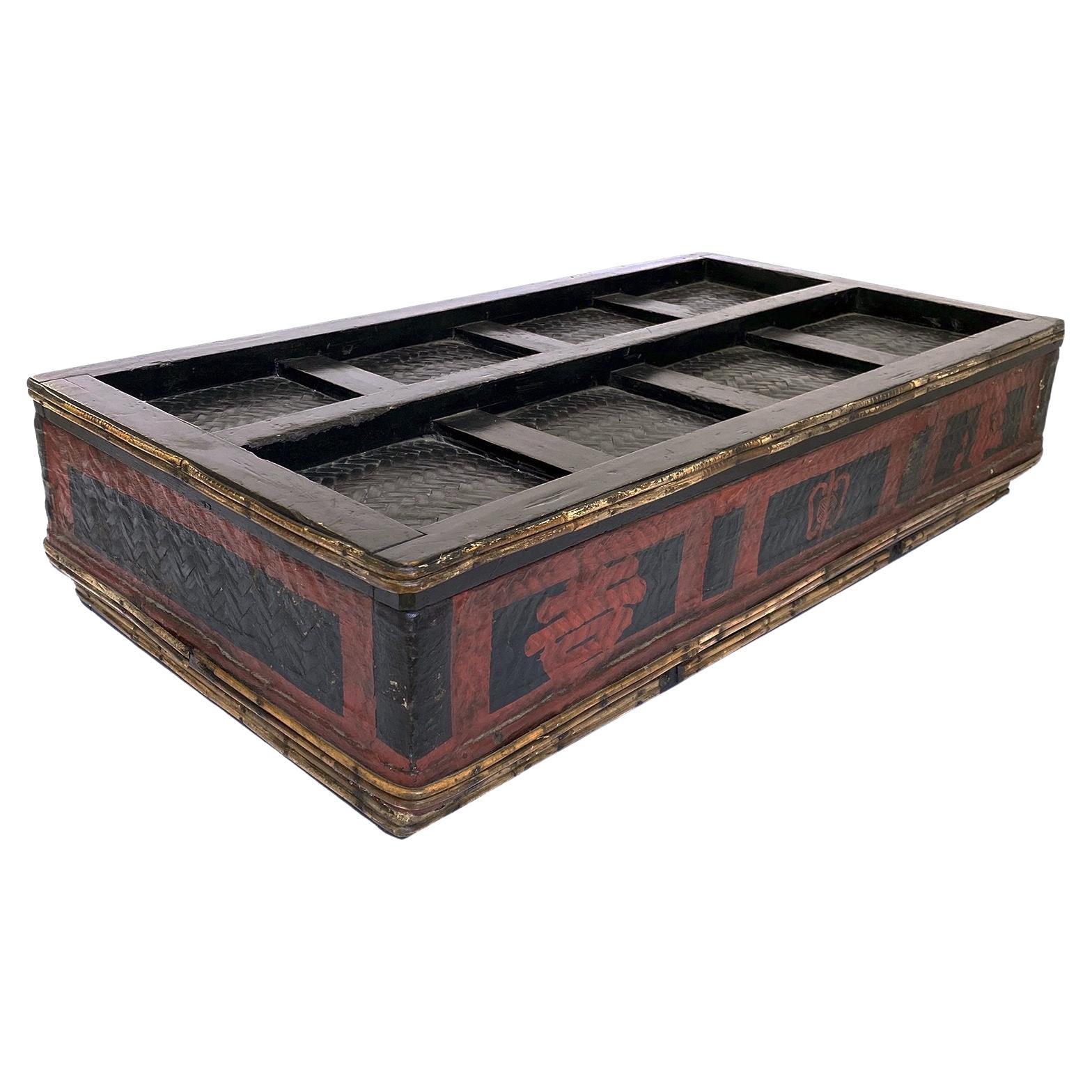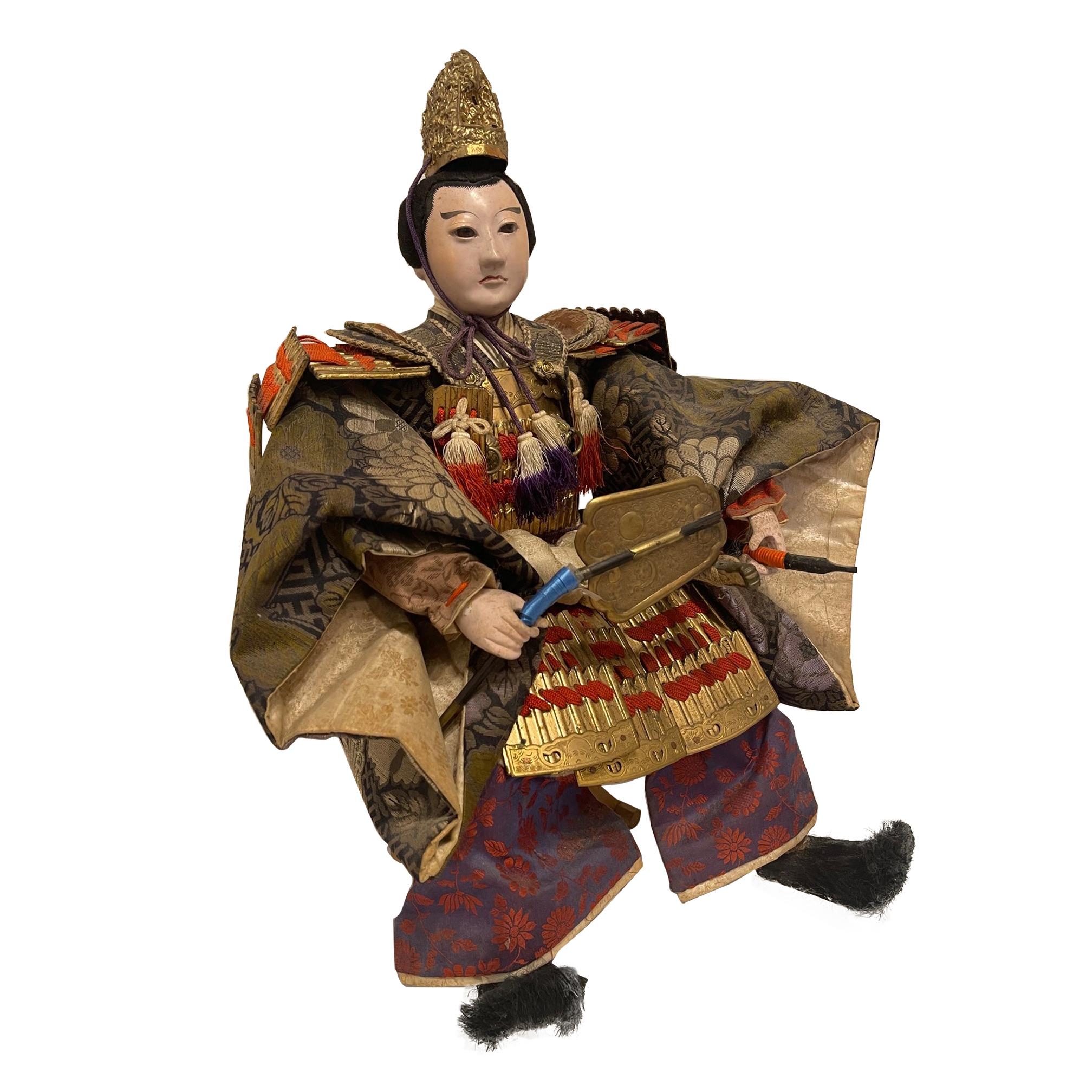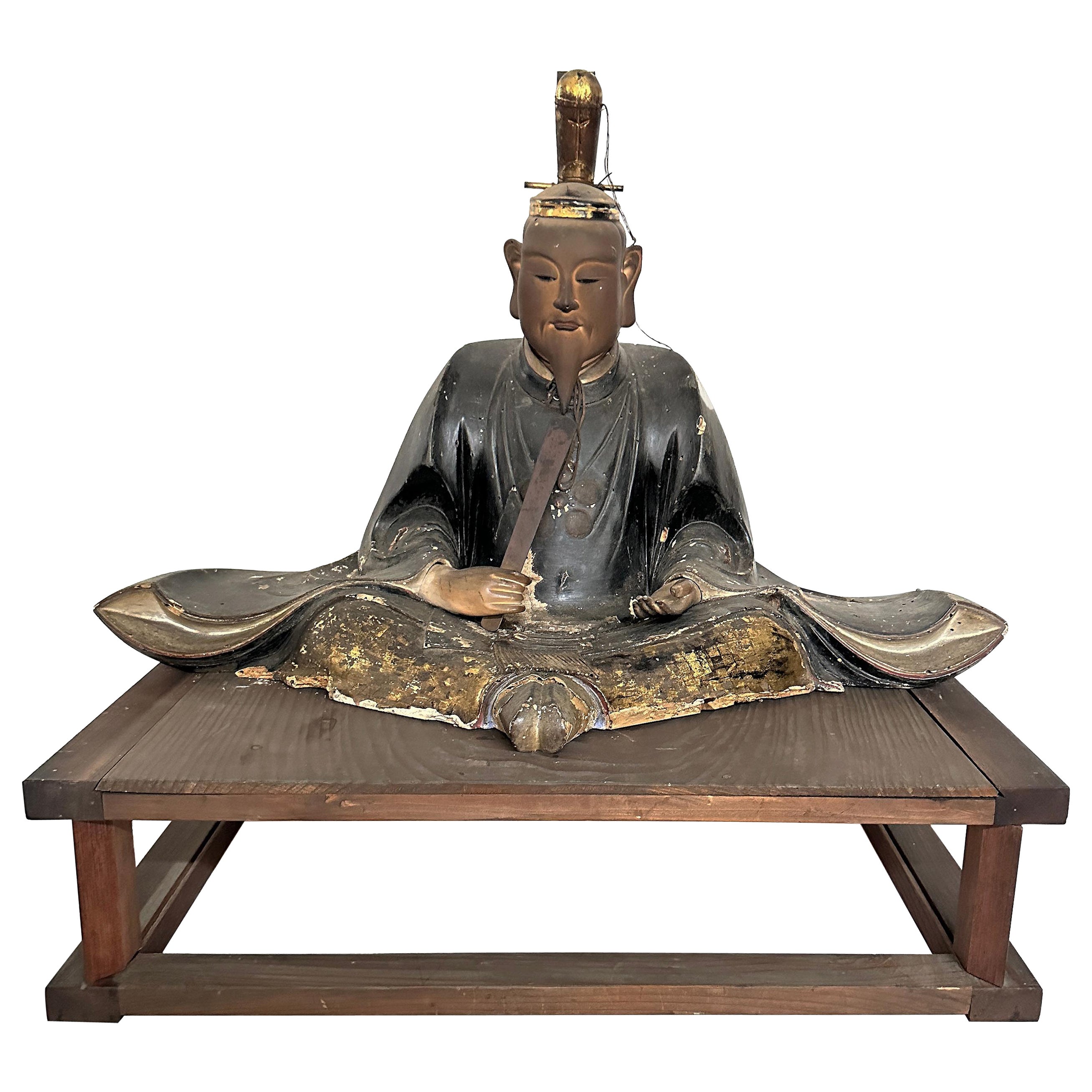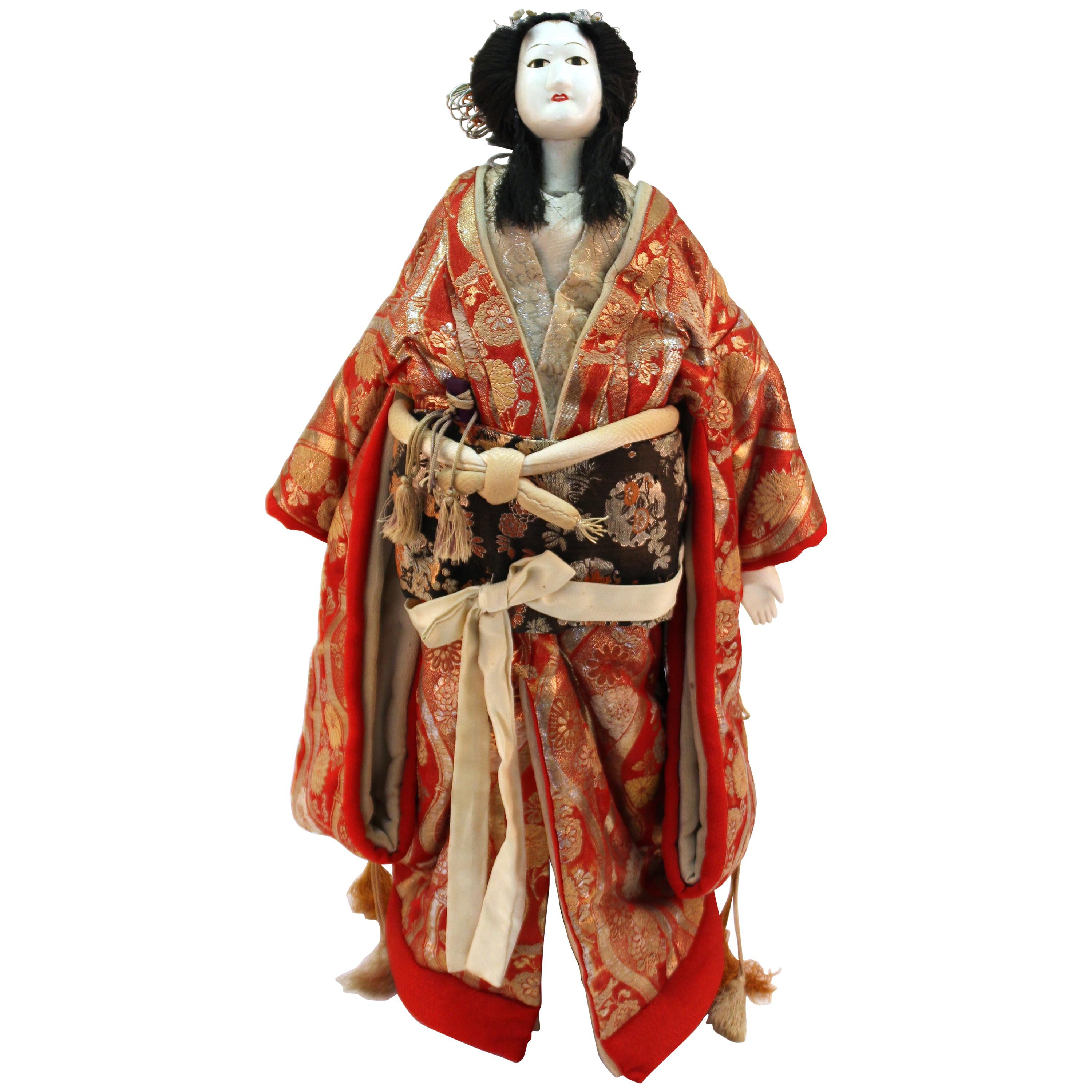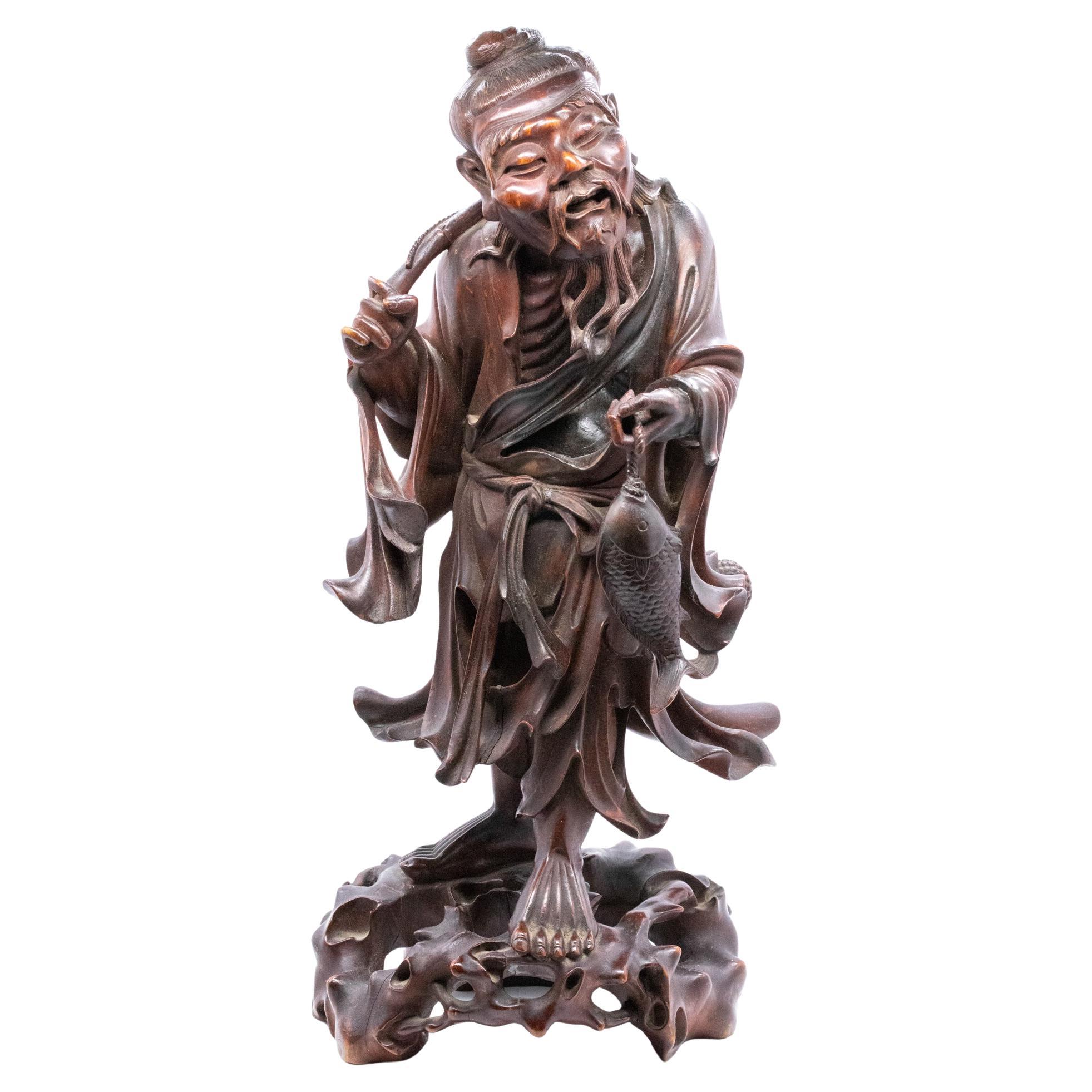Items Similar to Antique Japanese Meiji Period Kneeling Samurai Warrior, Circa 1870-1880
Want more images or videos?
Request additional images or videos from the seller
1 of 11
Antique Japanese Meiji Period Kneeling Samurai Warrior, Circa 1870-1880
About the Item
Antique Japanese Kneeling Samurai Warrior, Circa 1870-1880. Japanese Meiji period samurai with detailed presentation of robes and helmet.
- Dimensions:Height: 9.25 in (23.5 cm)Width: 7 in (17.78 cm)Depth: 6 in (15.24 cm)
- Style:Meiji (Of the Period)
- Materials and Techniques:
- Place of Origin:
- Period:
- Date of Manufacture:circa 1870-1880
- Condition:Wear consistent with age and use.
- Seller Location:Savannah, GA
- Reference Number:
About the Seller
4.8
Gold Seller
These expertly vetted sellers are highly rated and consistently exceed customer expectations.
Established in 1990
1stDibs seller since 2012
539 sales on 1stDibs
Typical response time: <1 hour
- ShippingRetrieving quote...Ships From: Savannah, GA
- Return PolicyA return for this item may be initiated within 7 days of delivery.
More From This SellerView All
- Japanese Samurai Doll or Figure, Meiji Period, Circa 1830Located in Savannah, GAJapanese Samurai Doll or Figure, Meiji Period, circa 1830. Skirt purple and red colors.Category
Antique Early 19th Century Japanese Meiji Antiquities
MaterialsPorcelain
- 19th Century Large Japanese Arita ChargerLocated in Savannah, GA19th century large Japanese Arita charger, the wide scalped-edge with key fret band framing the under glaze blue painted landscape with a lakeside viewin...Category
Antique 19th Century Japanese Ceramics
MaterialsPorcelain
- Japanese Tansu Storage Cabinet with Sliding Doors, Meiji Period, 19th CenturyLocated in Savannah, GALarge Two Section Japanese Kitchen Tansu, Late 19th Century. Interior bottom section has been modified to accommodate a TV. Part of the back bot...Category
Antique Late 19th Century Japanese Meiji Cabinets
MaterialsElm
- Pair of Japanese Meiji Period Porcelain Lidded Jars, 19th CenturyLocated in Savannah, GAPair of Japanese Meiji Period Porcelain Lidded Jars, 19th Century . Wood stands are includedCategory
Antique 19th Century Japanese Vases
MaterialsPorcelain
- Chinese Leather Trunk with Floral Motif, 18th CenturyLocated in Savannah, GAChinese leather trunk, 18th Century. Colored floral motif painted on sides/top; lined with writing on paper. Measures: 32.25" W x 21.75" D x 20.5...Category
Antique 18th Century Chinese Furniture
MaterialsLeather
- Black Asian Trunk with Brass Fittings, Early 20th CenturyLocated in Savannah, GABlack Asian trunk with brass fittings, Early 20th century. Glass top that can be removed.Category
Early 20th Century Japanese Furniture
MaterialsWood
You May Also Like
- Meiji Period Red and Black Painted Kimono Storage Box, JapanLocated in Point Richmond, CAJapanese Kimono storage box, constructed of wood and bamboo, painted black with family crest painted in red on the sides. The top has wood slats, which ...Category
20th Century Japanese Meiji Sculptures and Carvings
MaterialsWood
- Tenjin-Sama, Wood, Japanese Shinto Deity of Learning and Wisdom, Meiji PeriodLocated in Point Richmond, CATenjin-Sama, Shinto Deity of Learning and Wisdom, Meiji Period Tenjin,-Sama, Deification of Sugawara no Michizane, was a famous scholar, poet and politician of the Heian period. In...Category
Antique Late 19th Century Japanese Meiji Sculptures and Carvings
MaterialsWood
- Japan 1890 Meiji Period Signed Assembling of Okimono with a Group of SkeletonsLocated in Miami, FLA signed Okimono from the Japanese Meiji period (1868-1912). Very rare, unusual and large sculptural assembling of a dysplaying piece of okimono. Created in Japan during the imperial period of the Meiji (1868-1912). This extraordinary piece okimono sculpture depict a group of four intricately and realistically rendered carousing males skeletons representations (Gaikotsu) standing in several position. One skeleton is crouched down playing with mouses in the floor. The second is seated resting in the other's back, peacefully smoking opium. The others two are fully standing in interacting position. The entire composition is arranged freely displayed on the wood base including a woven basket, apparently with food and four playfull mouses. There are an extra five mouses in different positions, freely playing around, all of them with the eyes accented with carved black ebony. The composition is displayed on a four-legged free form carved wood platform with an inlaid red plaque engraved with the artist's signature. The level of detail and the quality of the carving is truly exceptional. Has an exact measurements of 216.15 mm by 139.7 mm by 359.41 mm (8.51 x 5.5 x 14.15 Inches). After an extensive collection of data, comparables and references to this piece, we have only been able to find only three okimono sculptures like this, with similar themes and the same quality of work. References Note: A similar carving of four skeletons playing an animated game of dominos, signed Shutaro in an inlaid rectangular red plaque, was sold in London by Christie’s South Kensington in October 14 2014, Lot 120 Sale 5546. References Note: A similar carving with four skeletons in an otherwise typical victorian scene of a photographer and three sitters signed Shutaro in an inlaid rectangular red plaque, was sold in Edinburgh at Lyon & Turnbull in November 7, 2018. References Note: A similar carving with five skeletons seated, playing cards and drinking, was sold in London by John Nicholson Fine Art on September 26, 2018. Meiji period, is an era of Japanese history that extended from October 23, 1868 to July 30, 1912.The Meiji era was the first half of the Empire of Japan, when the Japanese people moved from being an isolated feudal society at risk of colonization by Western powers to the new paradigm of a modern, industrialized nation state and emergent great power, influenced by Western scientific, technological, philosophical, political, legal, and aesthetic ideas. As a result of such wholesale adoption of radically different ideas, the changes to Japan were profound, and affected its social structure, internal politics, economy, military, and foreign relations. The period corresponded to the reign of Emperor Meiji. It was preceded by the Keio era and was succeeded by the Taisho era, upon the accession of Emperor Taisho. Okimono, is a Japanese term meaning for display an ornament; art object; or decorative object, usually displayed in a tokonoma or butsudan "Buddhist altar". It is an ornament or figure, especially one placed in a guest room. An okimono may be a small Japanese carving...Category
Antique 1890s Japanese Meiji Sculptures and Carvings
MaterialsWood
- Japanese Meiji Bunraku Ningyo PuppetLocated in New York, NYJapanese Meiji period puppet for the traditional Bunraku ningyo joruri puppet theater. The piece has a carved wood head and is adorned with richly detai...Category
Antique Early 1900s Japanese Meiji Sculptures and Carvings
MaterialsTextile, Wood
- Japan 1890 Meiji Period Ebisu Sculpture in Wood Carving of an Old FishermanLocated in Miami, FLAn extremely well detailed wood carving of Ebisu, as a fisherman. Beautiful and well detailed sculpture, created in Japan during the Meiji dynastic period (1868-1912) back in the 1890's. This piece represent the god of good fortune Ebisu. Was exceptionally carved and executed from one solid single piece of rose wood, showing a gorgeous face expression, with intricate details in the hands and feets, he's carrying as usual a rod and a fish. Ebisu (yebisu), ???, god of fortune, the ocean and fisherman. In the japanese mythology is one of the seven gods of luck, sichi-fuku-jin, the patron of the fisherman and tradesmen. he is depicted as a bearded, smiling fisherman with formal long court ropes, often carrying a rod in one hand and a tai, symbolic fish of the good luck, in the other. The height is 14.25 inches (36.20 cm) and the base measurements is 6.5 by 6.45 inches (16.5 x 16.38 cm). Meiji period, is an era of Japanese history that extended from October 23, 1868 to July 30, 1912.The Meiji era was the first half of the Empire of Japan, when the Japanese people moved from being an isolated feudal society at risk of colonization by Western powers to the new paradigm of a modern, industrialized nation state and emergent great power, influenced by Western scientific, technological, philosophical, political, legal, and aesthetic ideas. As a result of such wholesale adoption of radically different ideas, the changes to Japan were profound, and affected its social structure, internal politics, economy, military, and foreign...Category
Antique 1890s Japanese Meiji Sculptures and Carvings
MaterialsWood
- Japanese Meiji Noh Mask of OkinaLocated in New York, NYJapanese carved wood Noh mask depicting Okina. The piece was made during the late Edo - early Meiji period in the 19th century. The mask is of an older man wi...Category
Antique 19th Century Japanese Meiji Sculptures and Carvings
MaterialsWood
Recently Viewed
View AllMore Ways To Browse
Circa 1870
Japanese Fabric
1880 Fabric
Antique Warriors
Antique Japanese Carving
Japan Samurai
Japanese Samurai
Antique Kneelers
Antique Kneeler
Japanese Samurai Art
Japanese Meiji Carving
Asian Samurai Art
19th Japanese Samurai
Asian Warrior
Japanese Antique Fabric
Antique Japanese Fabrics
Antique Japanese Fabric
Antique Asian Fabric
